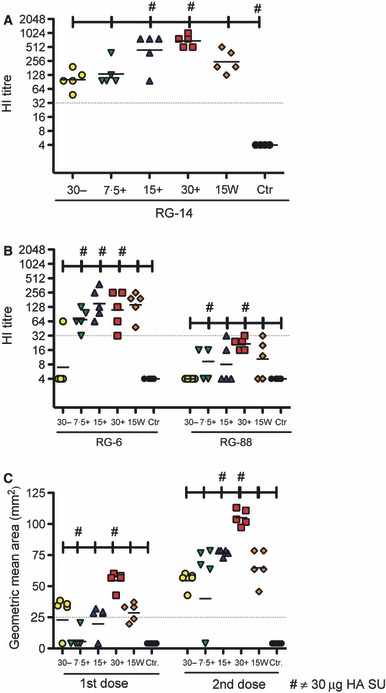Figure 2.

The serological antibody response induced after intranasal influenza vaccination. Groups of five mice were intranasally immunised once or twice (21 days apart) with a subunit (SU) influenza A H5N1 vaccine. The control (Ctr) group consisted of unimmunised mice. Three groups were vaccinated with different antigen doses (measured as μg HA) of the chitosan‐adjuvanted (+) SU vaccine (7.5+, 15+ or 30+). One group was vaccinated with a non‐adjuvanted (−) SU vaccine with 30‐μg HA (30−), and a further group was immunised with a non‐adjuvanted 15 μg HA whole virus (15W) vaccine. The serum haemagglutination inhibition (HI) antibody response was measured 21 days after the second vaccination to the homologous vaccine strain RG‐14 (A/Vietnam/1194/2004) (A) and the cross‐reactive HI response to RG‐6 (A/Anhui/1/05) and RG‐88 (A/Cambodia/R0405050/2007) (B). The single radial haemolysis (SRH) geometric zone area (C) to RG14 was measured 3 weeks after the first and second vaccinations. Each symbol represents an individual mouse, and the line represents the geometric mean titre for each group of five mice (A, B and C). The dotted line represents an HI titre of 32 (A and B) or an SRH zone area of 25 mm2 (C). HA, haemagglutinin.
